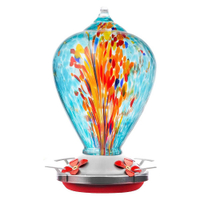How to attract hummingbirds to your yard – 6 ways to welcome these feathered friends
Try these simple methods to make your backyard more hummingbird-friendly
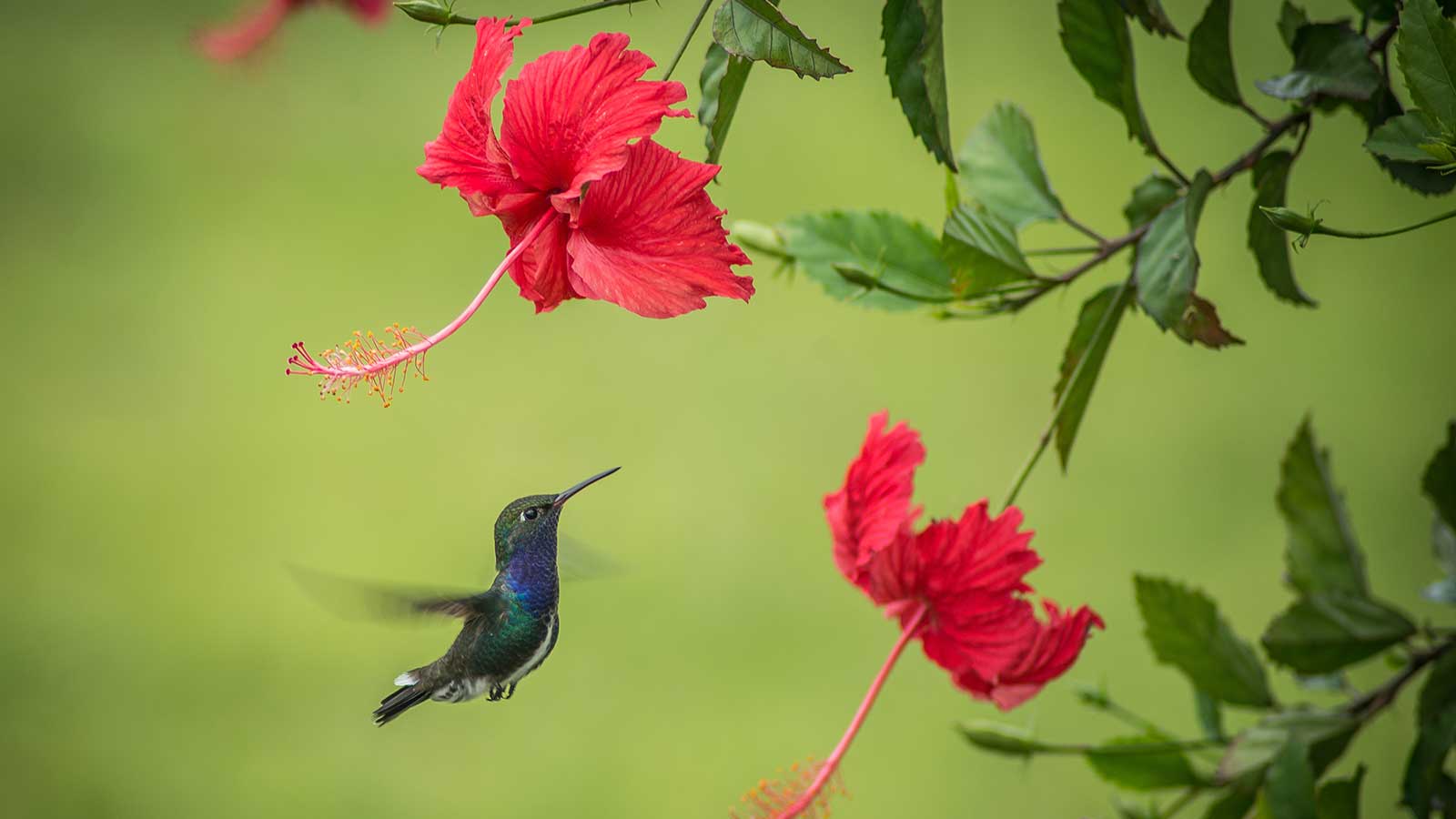

Spotting a hummingbird brings joy to any onlooker. And, by making your yard more enticing to them, you can enjoy the sight from your very own doorstep.
There are hundreds of species of these tiny, American natives, with many sporting brilliant colors of purples, greens, and blues. Some varieties can flap their wings more than 50 times per second – and it's the resulting humming noise from which they get their name.
There are a few wildlife-garden tips that will welcome these feathered friends – so why not give them a try this spring?
6 ways to create a hummingbird-friendly outdoor space
Attract these adorable birds to your backyard with these simple methods.
1. Plant their favorite flowers
Nectar is an important part of a hummingbird's diet. Native plants are the way to go, and hummingbirds are attracted to red blooms in particular. If the flowers are tubular, even better, as they're well-suited to hummingbirds' long, thin beaks.
Kelsey Waddell, an expert from WildBirdScoop, recommends honeysuckle, bee balm, and salvia. But there are many other flowers that will attract hummingbirds – and beautify your space in the process. If you only have a small patio to play with, try growing them in containers. In addition, try planting native spring flowers to attract hummingbirds earlier in the growing season.
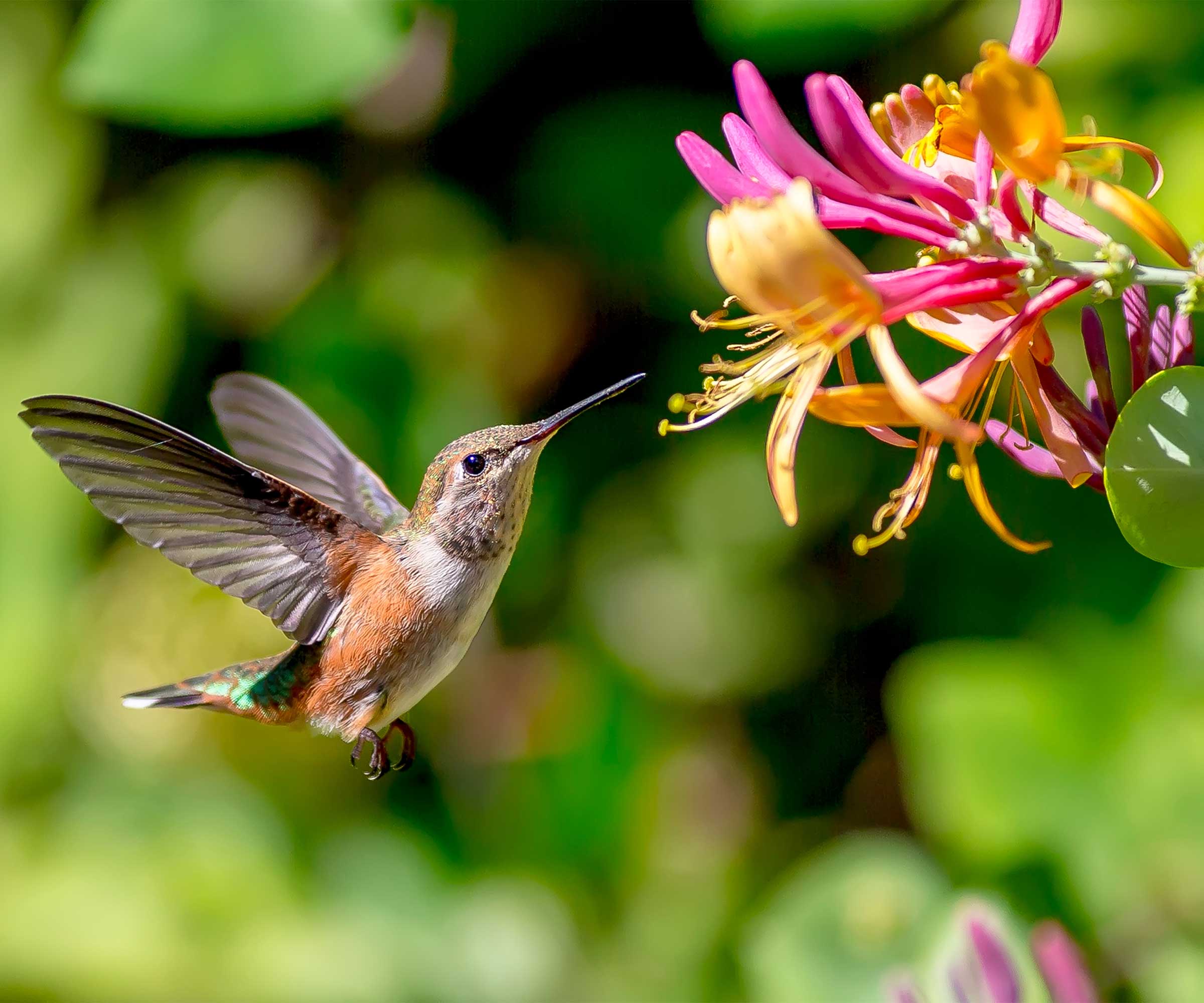
Honeysuckle attracts these small birds
2. Hang up hummingbird feeders
As well as planting flowers, you can provide an extra source of nectar by putting out hummingbird feeders. These can be filled with homemade hummingbird food (a simple two-ingredient recipe), or shop-bought pre-made food, such as Kaytee's hummingbird nectar from Amazon.
'Don’t use honey or artificial sweeteners, and there’s no need to add red coloring to the nectar,' says Kelsey. Remember to keep your hummingbird feeder clean to keep visiting birds happy and healthy, and put it out at the right time.
Where you hang your hummingbird feeder is important, too. Kelsey suggests putting it near trees or bushes, which provides the hummingbirds with cover should they feel threatened, as well as a place to perch while scoping the area for predators.
Blown Glass Muse Hummingbird Feeder | $26.99 from Amazon
This hummingbird feeder with four feeding ports is made from glass, and doubles up as stunning garden art. There are nine different colorways available, so you can choose one that fits your outdoor scheme perfectly. What's more, cleaning and assembling it is straightforward.

Keep your feeders clean and replace the nectar frequently

Kelsey is a freelance writer and amateur backyard-bird enthusiast living in southern Virginia. From the moment she moved from the suburbs to her current rural home, she was struck by the sights and sounds of the abundant wildlife. She's been watching, learning, and trying to attract more feathered friends ever since.
3. Provide fresh water
Water is a must for attracting wildlife to a garden, and brings sensory benefits to the space that you can enjoy, too.
'Provide a source of fresh water for hummingbirds to bathe and drink from, such as a bird bath or misting fountain,' advises Kelsey. Some experts believe that moving water, such as in a fountain, is even more attractive to hummingbirds, she adds.
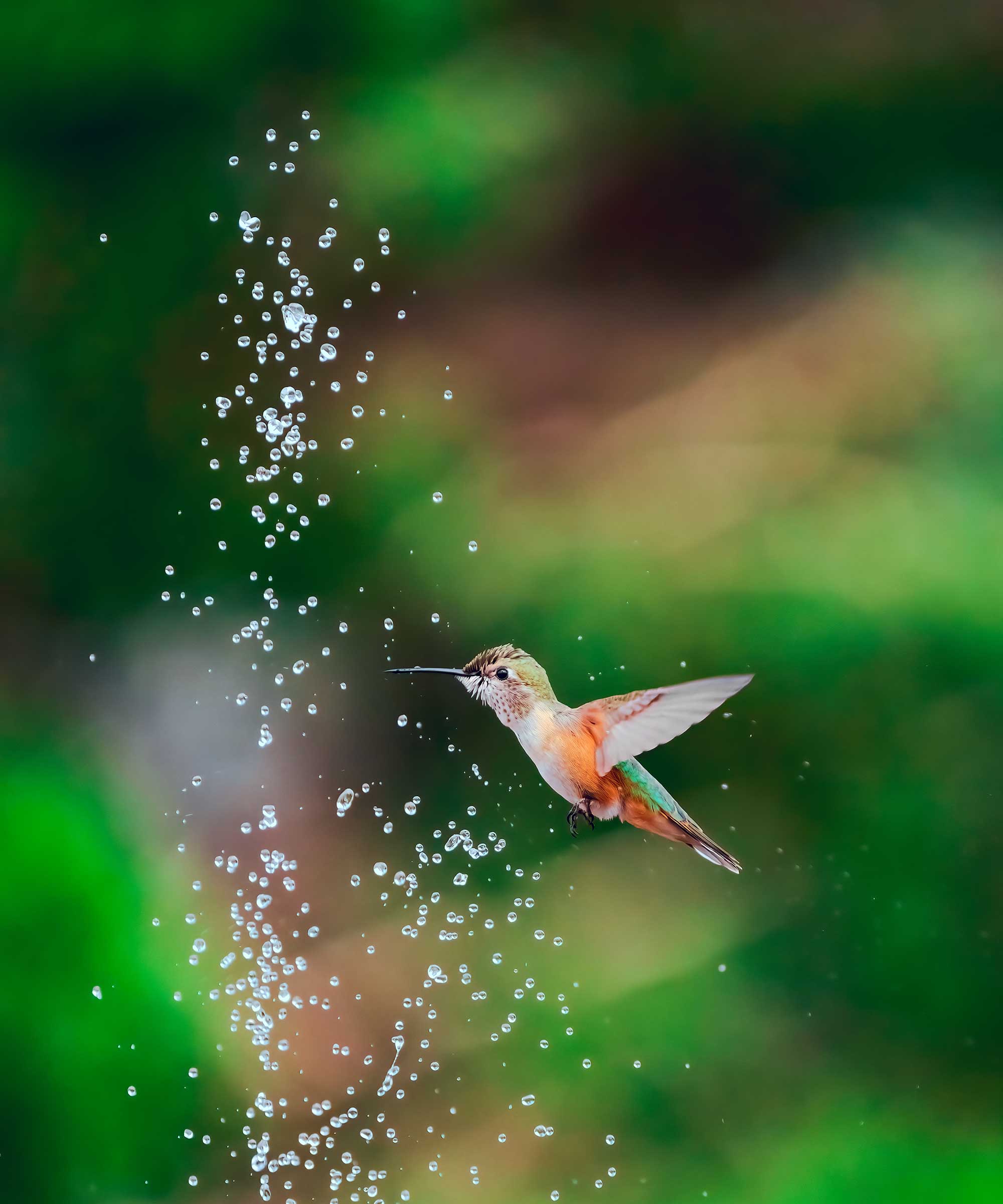
Water is essential for wildlife
4. Put out fruit
Tammy Poppie from OnTheFeeder.com suggests a unique approach that will lure in the tiny fliers.
'Hummingbirds are attracted to sweet food. While sugar water is an obvious sweet treat, so are fruits! Fruit juice to be exact,' she says.
'The key to offering fruit to attract them is to make sure it's either ripe or overripe and the skin is broken or the fruit is chopped. This exposes the fruit to the elements causing it to break down and become softer and juicy.
'Another benefit to offering fruit is that eventually, it'll attract fruit flies,' she adds. 'Hummingbirds need protein in their diet, too, and these flies fulfill that need. Overripe bananas are perfect for attracting fruit flies which will attract the hummers.'
5. Use the color red
Remember how hummingbirds are attracted to red flowers? Other red materials can attract hummingbirds to a yard, too, including red ribbons tied around branches and railings. This is also why many hummingbird feeders are red.
However, as Kelsey already mentioned, don't be tempted to dye your hummingbird's food red (or buy nectar that's already dyed), as this can potentially harm them.
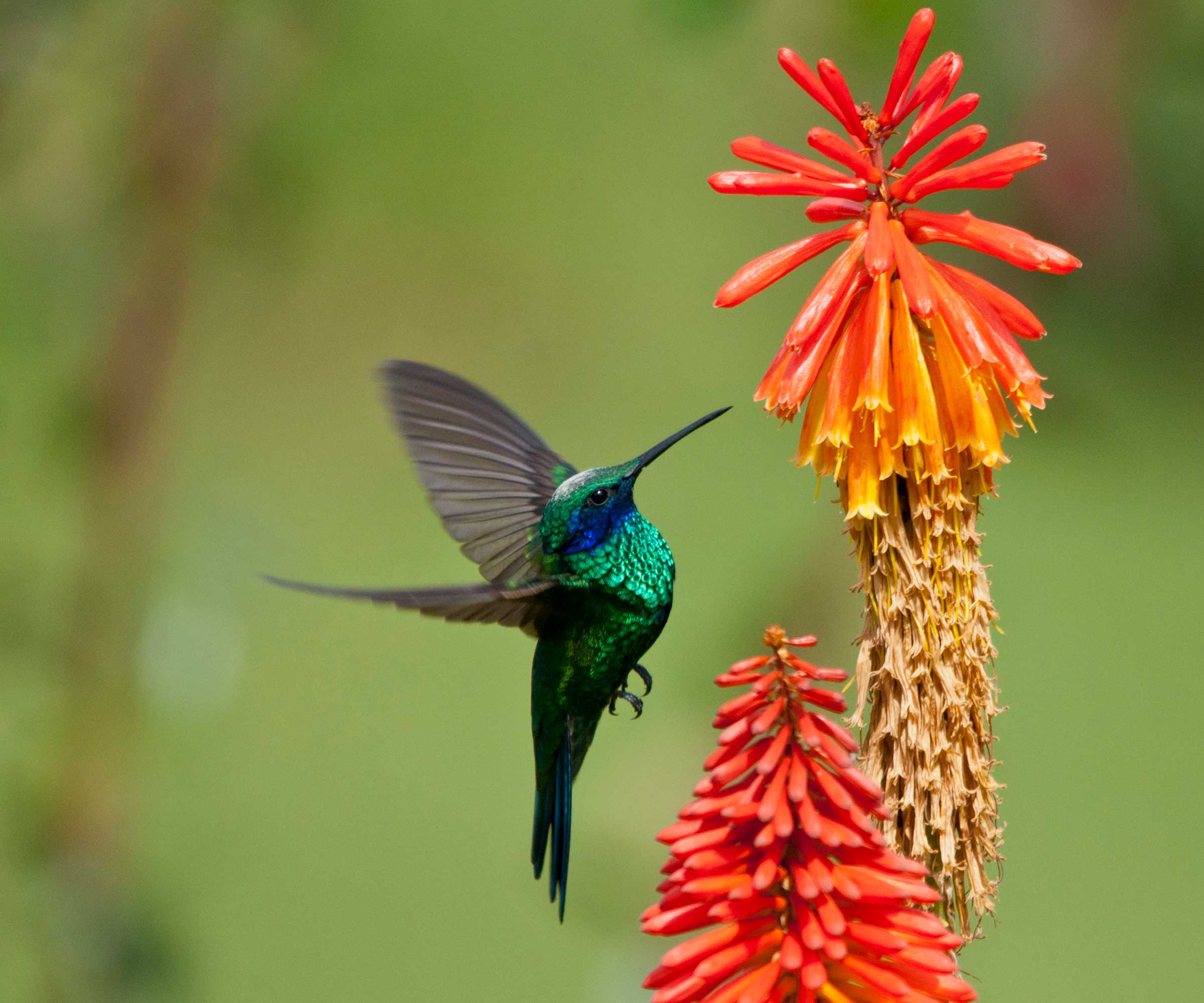
Hummingbirds are attracted to hot hues
6. Stop using pesticides
Pesticides are always a big no-no when trying to make a garden more wildlife-friendly. Not only can they harm hummingbirds but they can also wipe out beneficial insects which are a valuable source of food for them.
Instead, opt for natural, homemade bug sprays to deal with pest problems on your plants, as well as organic ways to get rid of weeds.
With these methods, you'll soon be able to enjoy the color and life that these tiny creatures bring to a backyard. And to make your space even more of a wildlife haven, consider how to attract red cardinals to your yard too.
Sign up to the Homes & Gardens newsletter
Design expertise in your inbox – from inspiring decorating ideas and beautiful celebrity homes to practical gardening advice and shopping round-ups.

Holly started writing about gardening five years ago, and she is a regular contributor to Homes & Gardens. She has also written many gardening features for Woman & Home and Real Homes, too. She has previous experience as a professional gardener, where she helped to plant and maintain private gardens. Holly has also looked after allotment plots over the years and loves to grow her own flowers and veggies from seed. In her spare time, she enjoys visiting local gardens, botanical drawing, and tending to her ever-growing collection of houseplants.
-
 This simple marble hack elevates my budget-friendly wooden kitchen countertops and prevents the dreaded water damage for way less than you’d think
This simple marble hack elevates my budget-friendly wooden kitchen countertops and prevents the dreaded water damage for way less than you’d thinkThis design trick looks expensive, solves a problem, and was the easiest decision I made during my kitchen reno
By Charlotte Olby Published
-
 Emily Blunt gifted Cillian Murphy this $545 pillow – she's 'obsessed' with these luxury pillows, and frankly, so are we
Emily Blunt gifted Cillian Murphy this $545 pillow – she's 'obsessed' with these luxury pillows, and frankly, so are weThe Oppenheimer stars sleep on this ultra-luxe goose down pillow – here's why we love it – plus our affordable alternatives from $35
By Sophie Edwards Published
